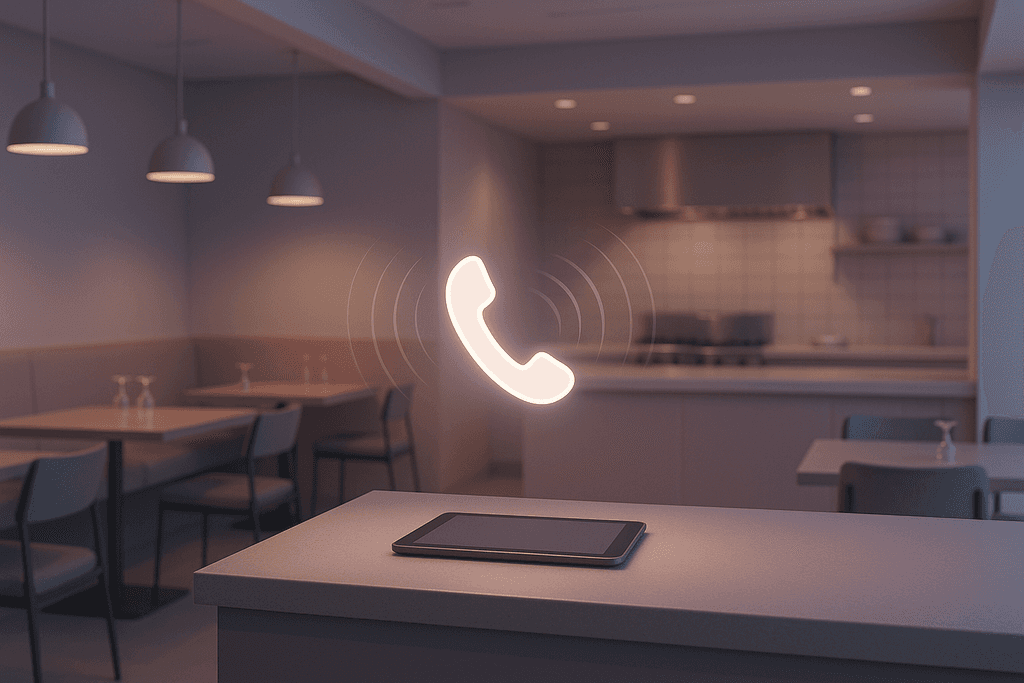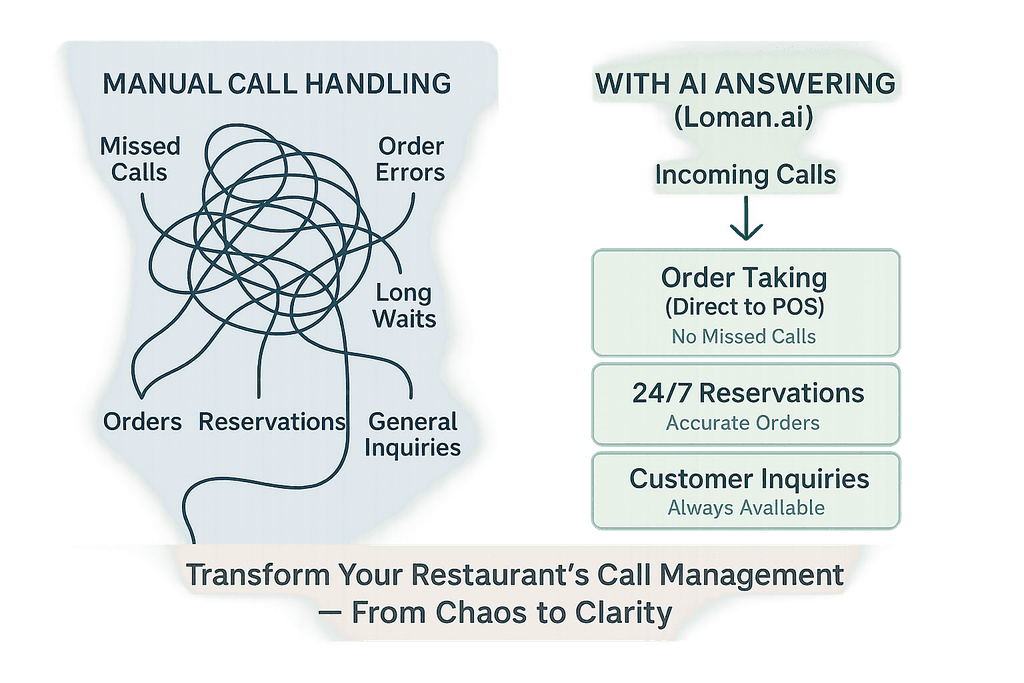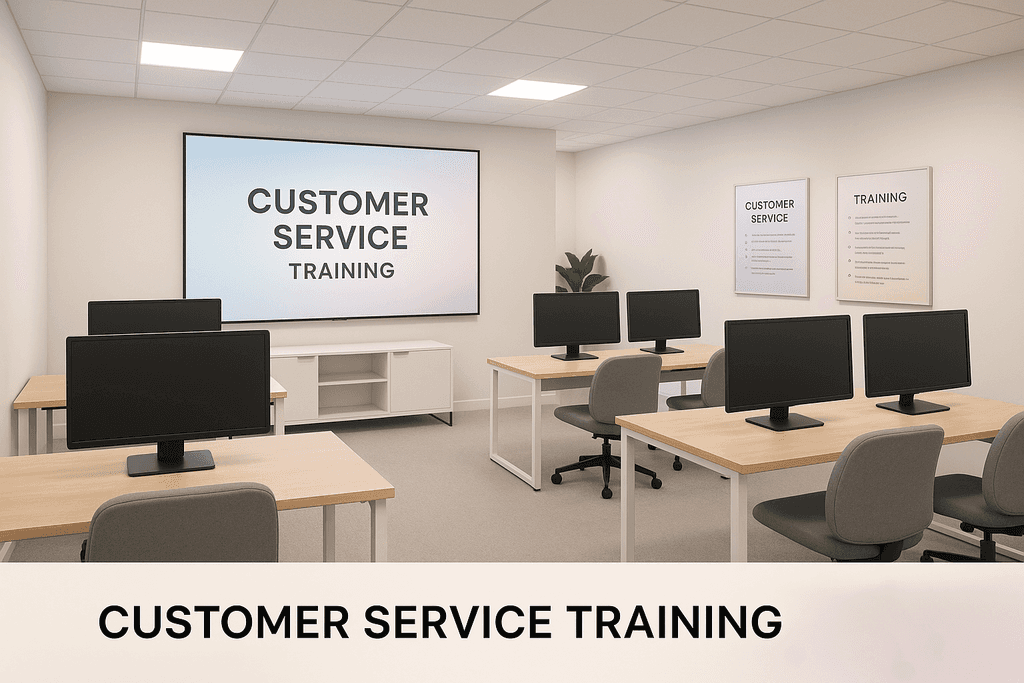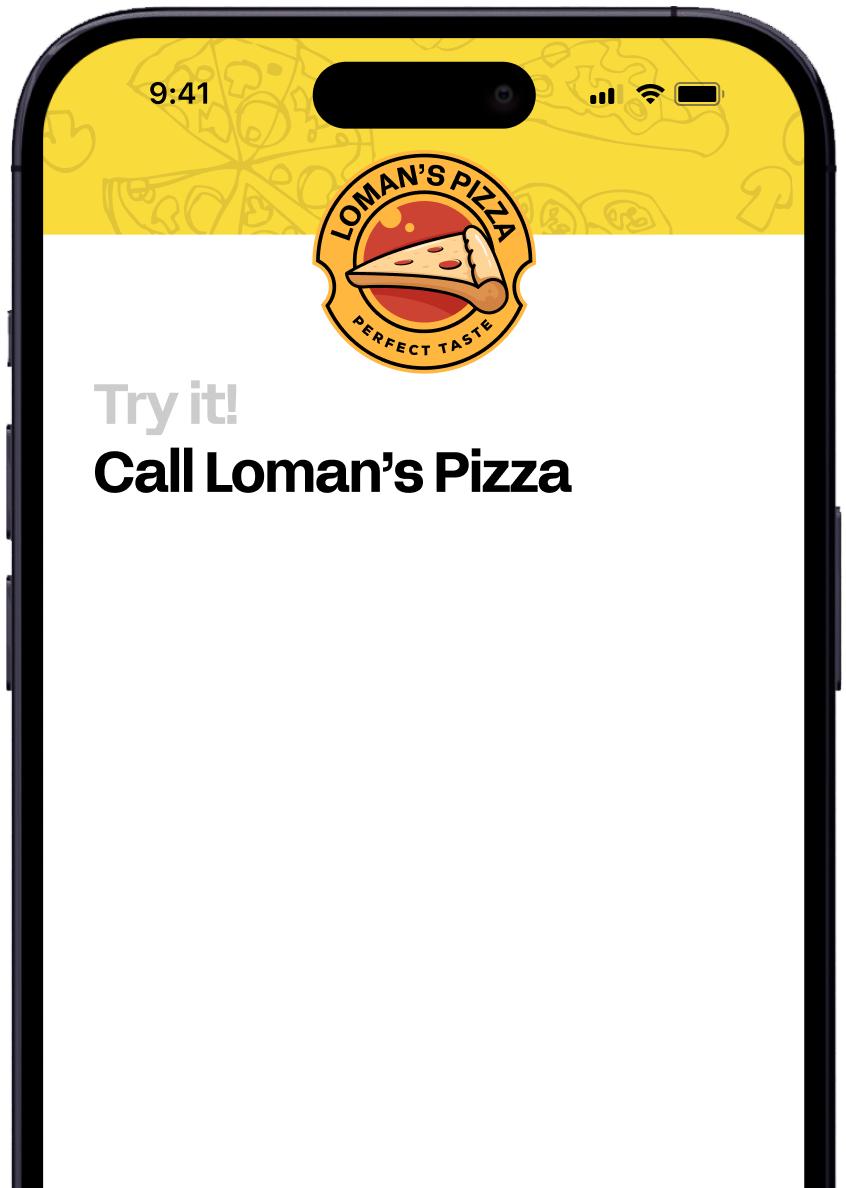September 30, 2025

Picture this: A bustling restaurant, phones ringing off the hook, and potential customers hanging up in frustration. It's a scenario that costs restaurants an average of $1,000 in lost revenue each week. But there's a game-changing solution on the horizon - AI phone answering systems are revolutionizing how restaurants handle calls, ensuring every inquiry is addressed and every order is captured.
Did you know that restaurants lose an average of $40,000 per year due to missed calls? This staggering figure highlights the critical role of effective communication in the food service industry. Over the years, restaurant phone management has undergone significant changes to address this costly issue.
Let's take a quick look at how restaurant communication has evolved:
The shift towards digital solutions has been driven by several factors:
Despite these advancements, many restaurants still struggle with managing high call volumes. A recent study found that 75% of customers will hang up if their call isn't answered within 45 seconds. This presents a significant challenge for busy restaurants trying to balance in-house service with phone orders.
Enter AI phone answering systems. These smart tools can handle multiple calls simultaneously, take orders accurately, and even make reservations. They're designed to integrate seamlessly with existing POS systems, making them a practical solution for restaurants of all sizes.
As we explore the benefits of AI in restaurant communication, keep in mind how these systems address long-standing industry pain points. The goal isn't just to answer more calls, but to enhance overall customer experience and boost restaurant efficiency.
Let's face it - managing phone calls in a busy restaurant can be a real headache. That's where AI phone answering comes in. These smart systems are changing the game for restaurants of all sizes.
The core features that make AI phone systems so valuable include:
With 24/7 availability, these AI assistants never sleep. They can take orders and book tables around the clock, even when your staff has gone home for the night. This means you'll never miss out on a late-night craving or an early bird trying to snag a prime dinner slot.
The magic really happens when AI integrates with your point-of-sale system. Orders flow directly into your kitchen workflow, cutting down on errors and speeding up service. It's like having a super-efficient digital waiter that never gets flustered during the dinner rush.

Now, let's talk numbers. AI phone systems aren't just cool tech - they're serious business boosters. Here's how they can impact your bottom line:
Think about all those times the phone's ringing off the hook and your staff is too swamped to answer. Each missed call is potentially lost revenue. AI systems catch every call, turning those missed opportunities into actual sales.
Surprisingly, AI can often be more accurate at taking orders than humans. No more mix-ups between "no onions" and "extra onions". This precision leads to fewer remakes and happier diners.
Let's not forget about the labor savings. By automating routine tasks, your staff can focus on creating great in-house experiences. It's like adding an extra set of hands without increasing your payroll.

Ready to give AI a shot in your restaurant? Here's a quick roadmap to get started:
Never Miss Another Phone Call. Try Loman Today.
Book a DemoStart by taking a hard look at your current phone situation. How many calls are you missing? What are the most common questions or orders? This info will help you pick the right AI solution for your needs.
When choosing a provider, look for one that specializes in restaurants. They'll understand the unique challenges of food service and have features tailored to your business. Loman.ai, for example, is built specifically for restaurants and integrates with popular POS systems.
Don't forget to bring your staff on board. They'll need to know how to work with the AI system and when to step in for complex situations. A smooth handoff between AI and humans is key to great customer service.
Finally, keep an eye on the numbers. Track metrics like order volume, customer satisfaction, and labor costs. Use this data to fine-tune your AI system and maximize its impact on your business.
By embracing AI phone answering, you're not just keeping up with tech trends. You're setting your restaurant up for smoother operations, happier customers, and a healthier bottom line. It's like having a tireless, super-efficient team member who's always on call, ready to help your business grow.

AI phone answering systems like Loman.ai are just the beginning of a major shift in how restaurants operate. As these tools become more sophisticated, we'll likely see them take on even more responsibilities:
But widespread AI adoption in restaurants faces some hurdles. Staff training and acceptance is crucial for smooth implementation. Restaurants will need to invest time in getting their teams comfortable with new AI tools.
AI phone systems fit into a broader trend of digital transformation in the restaurant industry. They're part of a shift towards more data-driven, efficient operations. AI is already being used in various ways across the hospitality sector, from chatbots for hotel bookings to predictive maintenance in kitchens.
For restaurant owners, the key is finding the right balance. AI can handle routine tasks, freeing up staff to focus on creating memorable dining experiences. But the human touch will always be essential in hospitality. The most successful restaurants will be those that use AI to enhance, not replace, the personal connections that keep customers coming back.
As AI continues to evolve, we can expect even more innovative applications in restaurants. Voice-activated ordering systems and AI-powered cooking assistants might become commonplace. The challenge for restaurant owners will be staying ahead of the curve and adopting the right technologies at the right time to improve efficiency without losing their unique charm and character.
AI phone answering is changing how restaurants handle calls. It's not just about picking up the phone anymore. It's about making every call count. Restaurants using AI are seeing more orders, happier customers, and staff who can focus on what matters most - the food and the dining experience.
The numbers don't lie. Some restaurants have seen sales jump by 25% after adding AI to their phone systems. That's a big deal in an industry where margins are often tight. Plus, it's helping solve common problems like missed calls and order mix-ups.
But it's not just about the money. It's about staying current in a world where customers expect quick, accurate service. AI phone systems like Loman.ai are helping restaurants meet these expectations without breaking a sweat.
As we look ahead, it's clear that AI will play a bigger role in how restaurants operate. From taking orders to managing reservations, AI is becoming a key ingredient in the recipe for restaurant success. For those wondering how to get started, checking out a demo of AI phone answering could be a smart first step.
The restaurant business is tough, but with the right tools, it doesn't have to be. AI phone answering is one of those tools that's making a real difference. It's worth considering how it might fit into your restaurant's future.
The cost varies based on call volume and features needed. Most restaurants see a positive ROI within the first month due to increased order accuracy and fewer missed calls. Loman.ai offers flexible pricing plans to fit different budgets and needs.
Yes, AI phone systems like Loman.ai are designed to integrate seamlessly with popular restaurant POS systems and existing phone lines. The setup process is quick and doesn't require major changes to your current tech setup.
Most customers adapt quickly and appreciate the fast, accurate service. The AI is trained to sound natural and handle complex requests. Some restaurants even report that customers can't tell they're talking to AI.
The learning curve is minimal. Staff usually find the system easy to use and appreciate how it frees them up to focus on in-house customers. Training is provided to ensure smooth adoption.
Data security is a top priority. AI systems use encryption and comply with industry standards to protect customer information. Loman.ai, for example, follows strict data privacy protocols to ensure all customer data remains secure and confidential.
Absolutely. Modern AI systems are trained on specific restaurant menus and can handle detailed orders, dietary restrictions, and special requests. They can even ask clarifying questions to ensure order accuracy.

Enter your information in the form to receive a call from Loman and place an order like a customer would!